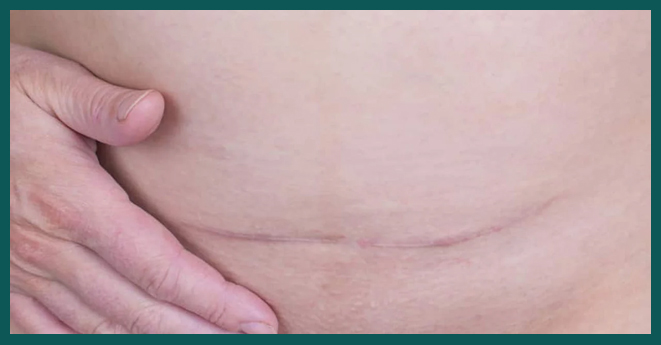

EVIDENCES OF SCAR RUPTURE (OR SCAR DEHISCENCE) DURING LABOR
There is no single pathognomonic clinical feature that can indicate uterine scar dehiscence or rupture. Presence of any of the following features should be taken into consideration: -
1) Abnormal CTG- (abnormal FHR, bradycardia, variable and late decelerations)-most consistent
finding (55–87%)
2) Suprapubic pain if severe and especially persisting in between contractions.
3) Shoulder tip pain or chest pain or sudden onset of shortness of breath.
4) Acute onset of scar
tenderness.
5) Abnormal vaginal bleeding or hematuria
6) Cessation of uterine contractions which were previously adequate
7) Maternal tachycardia, hypotension or shock and,
8) Loss of station of the presenting part. Early diagnosis of scar dehiscence or rupture needs prompt laparotomy and resuscitation to reduce mortality and morbidity in mother and infant.
PROGNOSIS: Previous history of classical cesarean section or hysterectomy makes the woman vulnerable to unpredictable rupture of the uterus. This may occur either late during pregnancy or during labor and when it does, the maternal mortality is to the extent of 5% and the perinatal mortality to 75%.
RISK OF LOWER SEGMENT SCAR RUPTURE: -
The risk of lower segment scar-rupture is low (0.2–1.5%) and even if it does occur, maternal death is much less and the perinatal mortality is about one in eight. The prognosis is dependent on scrupulous selection of cases as regards to the method of delivery. -Placed in ideal circumstances, the prognosis of the vaginal birth after cesarean section (VBAC) and that of repeat cesarean section group is almost identical so far as maternal and perinatal deaths are concerned. -However, in circumstances where meticulous observation in labor is not possible, liberal repeat section is likely to offer better prognosis.
CLASSICAL OR HYSTEROTOMY SCAR: - The scar is more likely to give way during late pregnancy and labour with increased risks to the mother and the fetus. As such, these cases should be delivered by elective caesarean section.
LOWER SEGMENT TRANSVERSE SCAR: - Usually heals better compared to the classical scar. During the course of the labour the integrity of the scar need to be assessed. It is indeed difficult to forecast precisely whether the particular scar is found or not. High index of suspicion is essential. Factors that are to be considered while assessing scar are: evidences of Scar Dehiscence during labour (Impending Rupture). Scar Dehiscence means asymptomatic separation of thinning of scar without involving the Peritoneal coat and without any hemorrhage.
HOMOEOPATHIC MEDICINES FOR MANAGING SCARS DURING PREGNANCY
1) Berberis Aquifolium : - used for treating Chronic skin conditions, this remedy is highly effective for the treatment of pimples on the face.
2) Belladonna: - it is an excellent remedy for skin problems. It helps in treating sensitive and dry skin, skin that seems hot when touched, Suppurative wounds. Eruptions on the skin which seem to spread. Boils, acne rosacea, redness of skin alternating with paleness.
3) Psorinum: - this remedy is primarily used for treating skin symptoms such as: dry and dehydrated skin that looks lifeless, oily skin, acne on forehead. Eczema behind ears.
4) Kali Bromatum: - for skin that appears cold and blue. Eczema on legs, elevated red patches on the skin. Acne which is worse on face and chest. Rose colored eruptions on legs. Boils and rashes on skin.